7 Important Stages of Mobile App Development Lifecycle
Rahul Motwani
October 14, 2022 1331 Views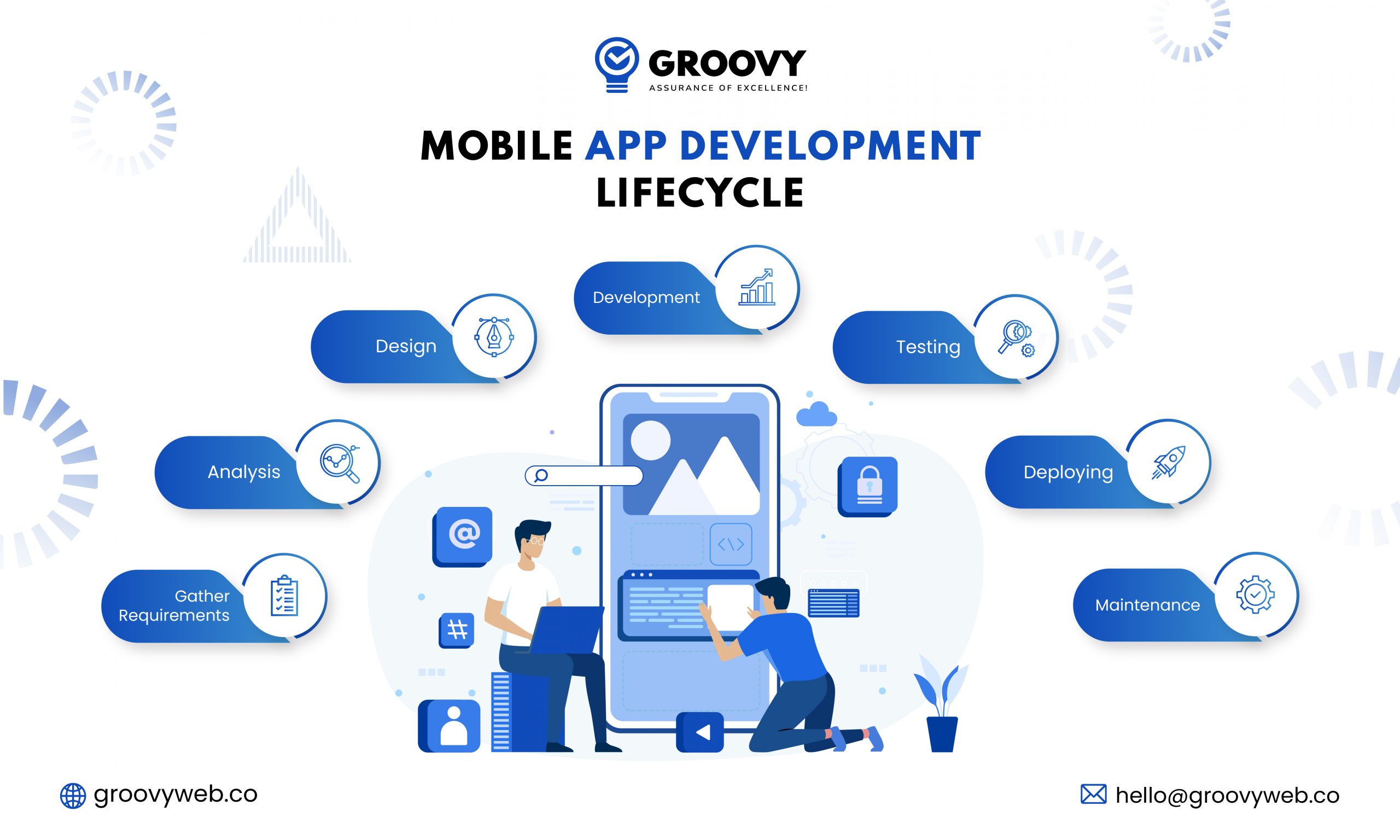
Quick Summary : To develop a successful mobile application, should need a proper guidance and planning, and skilled development team required. Here in this article we are going to discuss about the complete mobile app development lifecycle from idea to maintenance.
Mobile apps are digital products that attract many customers due to various practical features that make the work simple for users. People can implement these mobile applications in all fields, which will help to interact with the user and also help to understand their needs. There is no limit to the usage of mobile applications, and several kinds of benefits are available with these mobile apps.
Many people develop these practical mobile applications with various programming languages and several grids of codes that help function the applications per the users’ needs. So, people who need to know about mobile app development should understand basic computer programming concepts and other technologies that help with app development.
People with proper programming knowledge can create unique mobile applications but must ace various technologies and development methods, including programming languages. The development process has no barriers, and people can combine multiple technologies and languages to develop their applications with many attractive features per their customer needs.
Though mobile apps have several business values, many professional mobile app development companies are available in the market, and their job is to develop various kinds of mobile applications. These companies use a unique apps development process that remains the same for all mobile applications with different features and user requirements.
What is Mobile App Development?
Mobile application development is the process of creating interactable user programs that help people to solve various kinds of issues and help to simplify their work. In the mobile app development process, the developers use multiple types of technologies and programming languages.
The codes are the building blocks of computer software and mobile applications. So, to code the required command for the applications, people need to know about the programming language that helps them to code. Java, Python, C++, C#, and Javascript are some programming languages that help people develop various mobile applications.
The app development companies hire developers to work with their projects to create massive corporate applications available in the market. These companies use various advanced technologies and the experience of several experts to make their applications more attractive and suitable for all kinds of users.
The mobile app developers create several types of mobile applications per their clients’ needs. To understand the development process, people need to know about the mobile application life cycle, which helps to know all the functions necessary for the app development.
Mobile App Development Platforms
App development platforms are the primary requirement for the mobile application development process, and several kinds of mobile application development platforms are available in the market. Each development platform will have unique features that help to create attractive applications with various features. So, some of the mobile app development platforms are
- Flutter
- Adobe PhoneGap (Cordova)
- React native
- Ionic Framework
- Microsoft Xamarin
- Appcelerator
- Sencha
So, some app development platforms are available for people to develop various mobile applications according to their needs or clients’ requirements. Many corporate app development companies and individual app developers use these platforms to build their applications. These platforms simplify the development of various available tools and help the developers complete the job perfectly.
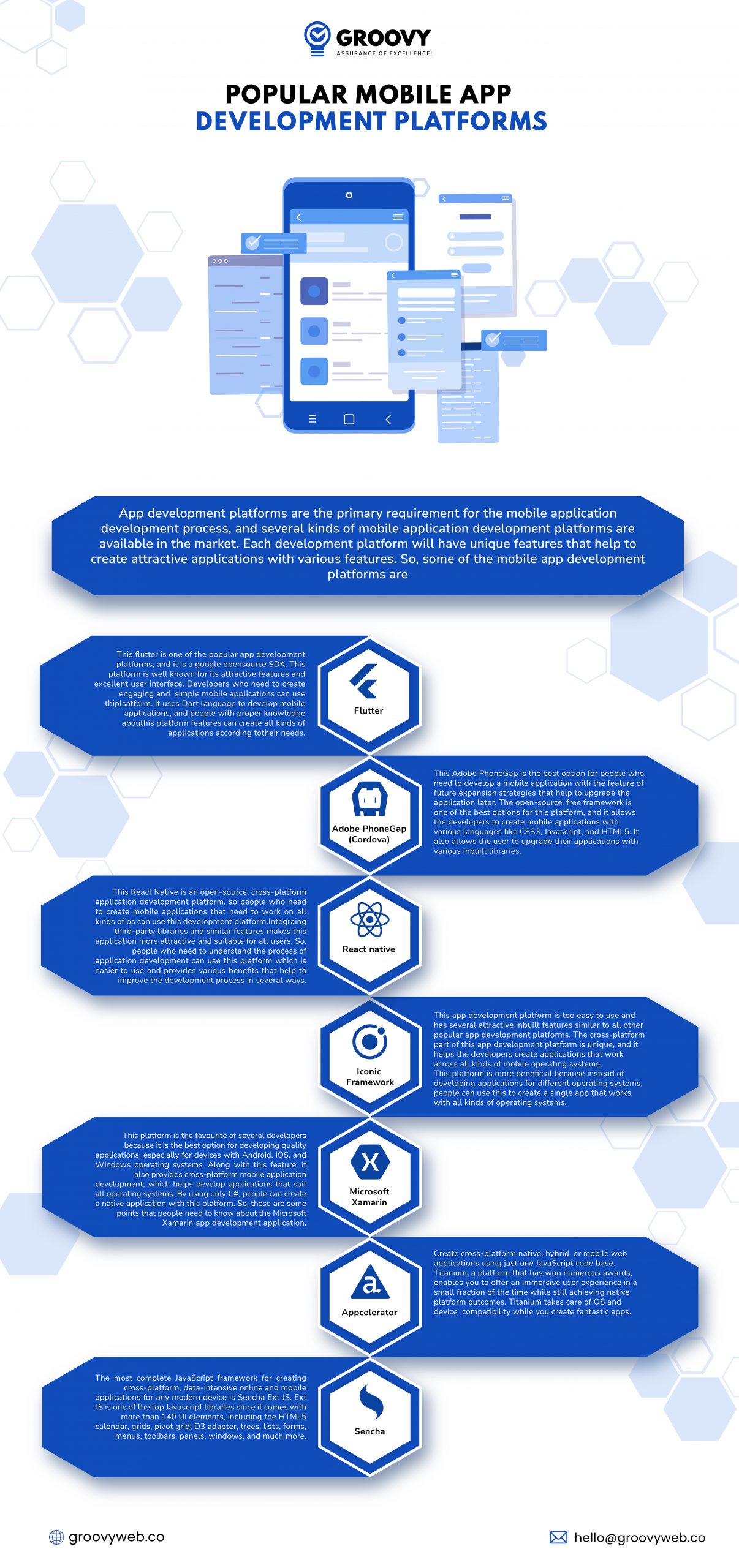
Flutter
This flutter is one of the popular app development platforms, and it is a google opensource SDK. This platform is well known for its attractive features and excellent user interface. Developers who need to create engaging and simple mobile applications can use this platform. It uses Dart language to develop mobile applications, and people with proper knowledge about this platform’s features can create all kinds of applications according to their needs. This platform supports both Ios and Android systems and is the best option for people who like to develop 2D games and clothing store applications.
Adobe PhoneGap (Cordova)
This Adobe PhoneGap is the best option for people who need to develop a mobile application with the feature of future expansion strategies that help to upgrade the application later. The open-source, free framework is one of the best options for this platform, and it allows developers to create mobile applications with various languages like CSS3, Javascript, and HTML5. It also allows user to upgrade their applications with various inbuilt libraries. This app development platform’s plug-in architecture helps people create multiple attractive applications with valuable features.
React native
This React Native is an open-source, cross-platform application development platform, so people who need to create mobile applications that need to work on all kinds of os can use this development platform. Integrating third-party libraries and similar features makes this application more attractive and suitable for all users. So, people who need to understand the process of application development can use this platform which is easier to use and provides various benefits that help to improve the development process in several ways.
Ionic Framework
This app development platform is too easy to use and has several attractive inbuilt features similar to all other popular app development platforms. The cross-platform part of this app development platform is unique, and it helps the developers create applications that work across all kinds of mobile operating systems.
This platform is more beneficial because instead of developing applications for different operating systems, people can use this to create a single app that works with all kinds of operating systems. People can use CSS, Javascript, and HTML to make all their mobile applications. So, these are some points that people need to know about the Ionic Framework app development platform.
Microsoft Xamarin
This platform is the favourite of several developers because it is the best option for developing quality applications, especially for devices with Android, iOS, and Windows operating systems. Along with this feature, it also provides cross-platform mobile application development, which helps develop applications that suit all operating systems. By using only C#, people can create a native application with this platform. So, these are some points that people need to know about the Microsoft Xamarin app development application.
Appcelerator
It is a well-systemized mobile application development platform which serves a fitting development environment. It is primarily for businesses and companies who want to build an application with a few lines of code. To create an app, it utilizes the most influential and modern language, i.e. JavaScript & APIs. Though, it builds and runs packages for all OS such as iOS, Android and Windows. The app runs in one specific language then it runs over all the languages beyond any trouble.
Sencha
Sencha is another important platform for creating cross-platform apps. These applications work on iOS, Windows and Android devices without any inconvenience. Developers can employ this striking technology to make applications using single codebase either JavaScript or JAVA to simplify the lifecycle of web applications.
What are the Alternatives for Developing Mobile Apps?
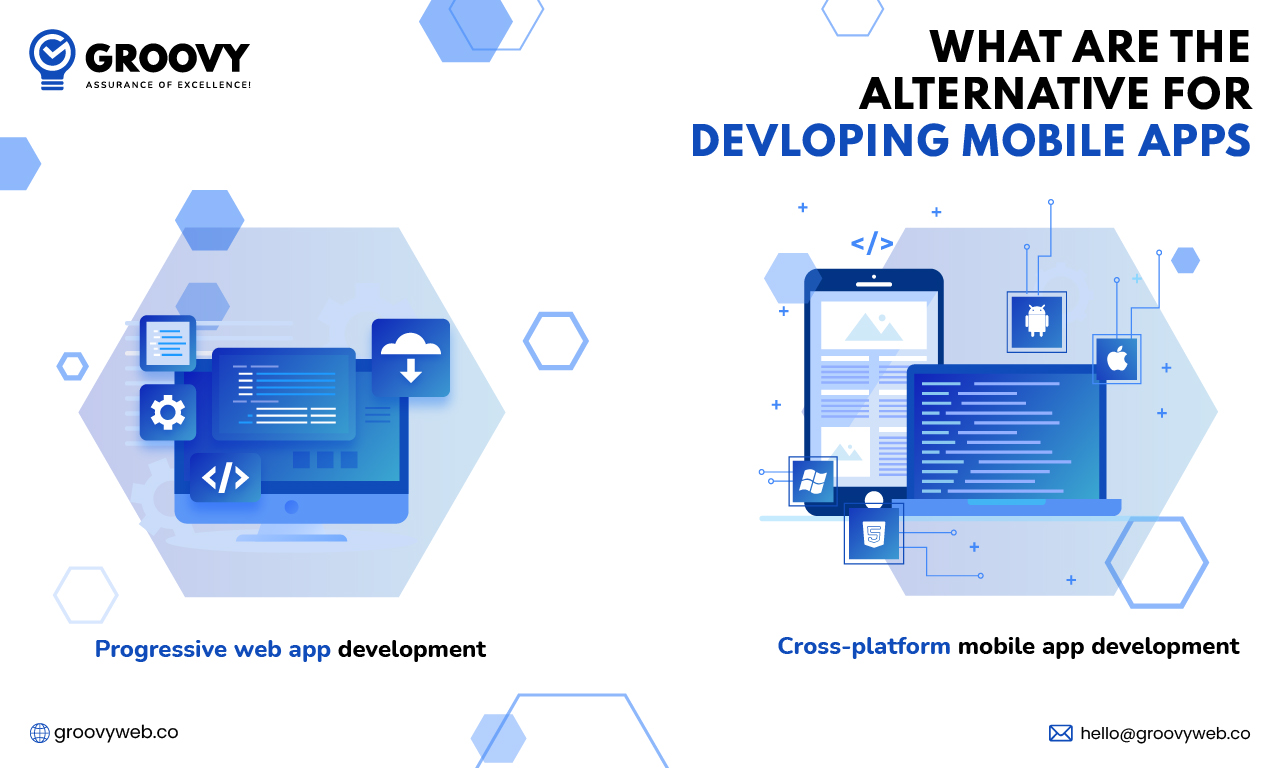
Several alternative options are available to implement against the regular mobile app development, and these practices will be more effective and suitable for all users. It can also catch up with all fields that need digital support. So, some of the alternative options for the native app development process are
- Progressive web app development
- Cross-platform mobile app development
So, these two are the alternative option available for app development. These two methods are more advanced and use various latest technologies that simplify the development process and improve the product’s efficiency. Many latest companies use these methods of app development to create different applications that are simple and effective.
PWA Development
This progressive web app development is one of the best app development methods and is the latest one too. So, in this method, developers create a website, and they use a small application that has a direct connection with the website, and the app acts as an entrance to the website. This process’s primary feature is developing a web application that works as usual as the mobile and desktop applications. So, with these kinds of web application development, people can predominantly reduce the application’s size and increase the website’s efficiency. People who know the advantage of the mobile applications will also understand the features available with these web applications.
Cross-platform mobile app development
The freelance mobile app developers create different applications with features that work with various specific mobile operating systems. So, this method will cost much to develop applications in various mobile OS. To overcome this problem, people can use the cross-platform mobile app development process to create different mobile applications with multiple features that work with all mobile operating systems.
With this app development method, people can save more money, and it also helps them attract people who use different brands of mobile phones with several varieties of mobile operating systems. So, these are some points people need to know about the alternative options available for application development.
Comparison Table for Various Mobile Application Types
There are several kinds of mobile applications available for users, and each of them will have different features as per their development and it also depends on various factors
| Types of mobile applications | Nature of the applications | Features |
| 1. Native Mobile App | The native mobile apps are unique for specific mobile operating systems, and all the codes and features in these apps will work with only a specific mobile OS. Most early-stage mobile apps are native apps, and they are for either iOS or Android mobiles. | These apps can interface with devices with native features, hardware, and even information.
It works perfectly with all the devices with appropriate OS |
| 2. Hybrid mobile app | These kinds of hybrid apps are the web applications that are in the native application shell. After download and installation, the app’s shell will connect with the embedded browser and access all the options that are capable for that particular device. | Use a small amount of storage space
Easy to access with a fast user interface Obtain regular auto updates. |
| 3. Cross-Platform App | Cross-platform apps are special applications that are suitable to work with all kinds of mobile operating systems. The developers use special codes and development platforms to create these kinds of advanced applications that don’t have operating system barriers. These applications help save money from spending on developing individual apps for several operating systems. | Works with all operating systems
Easy to access Attractive and best user interface Several benefits for developers |
| 4. PWA (progressive web app) |
Progressive web apps are websites that behave and looks like a mobile application. People can download these kinds of applications. It has some basic features of native mobile apps, making several downloads and purchases locally without reaching the respective stores. | Simple to use
Provide several features to the users Regular upgrades Attractive user interface Consume less space in the device |
So these are some details and a comparison that helps to understand the various kinds of mobile applications available in the market. Due to several technological developments, there are several technological advancements available in the field of app development, and people use various kinds of mobile applications. In all these processes, the front-end mobile app development is similar, and it helps users understand the applications’ working process.
Mobile App Development Requirements
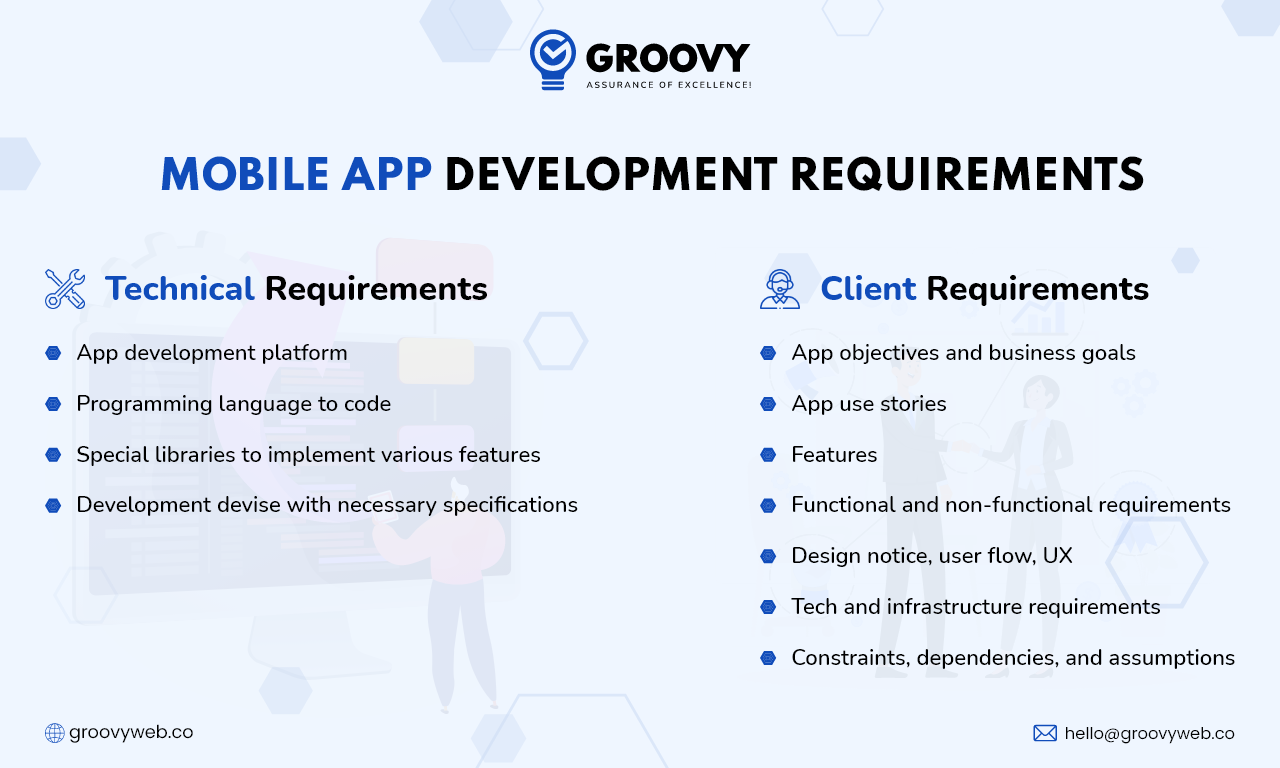
In the development process of mobile applications, people need to have several requirements. Some are technical requirements and some essential data for creating a mobile application. The technical requirements help to create a structure of the mobile application, and other client data will help the developers make the mobile application per the users’ requirements. so, some of the technical requirements for mobile app development are
- App development platform
- Programming language to code
- Special libraries to implement various features
- Development devise with necessary specifications
So these are the technical requirements that help to develop a mobile application, and all these components will help build a skeleton for the app. To make it fully functional, developers need to insert some client data to make them suitable for their clients. The client details that are necessary for developing mobile applications are
- App objectives and business goals
- App use stories
- Features
- Functional and non-functional requirements
- Design notice, user flow, UX
- Tech and infrastructure requirements
- Constraints, dependencies, and assumptions
So, these are some of the client-side data necessary for developing perfect mobile applications. So, all these are some of the requirements essential for creating all kinds of mobile applications available in the modern digital market. Every high-tech and best mobile app development company in UK that develop mobile applications gets details about all these requirements to start their development process to provide a perfect product to their customers.
Stages of Application Development Lifecycle
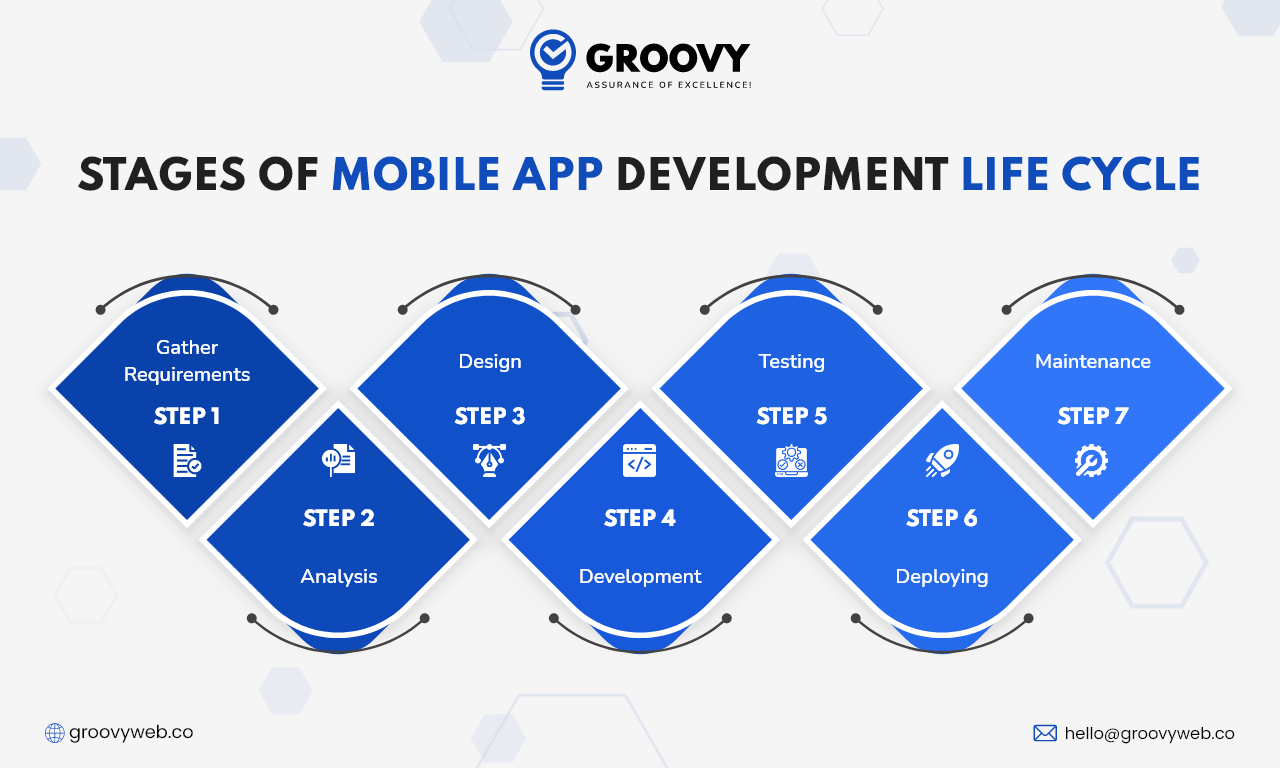
Developing a mobile application from scratch is the application development life cycle. All the processes in developing a mobile application will come under this name. So, this application development life cycle will contain various methods that help get the final applications for clients. So, the processes or stages available in the application development lifecycle are
- Gather requirements
- Analysis
- Design
- Development
- Testing
- Deploying
- Maintenance
So, these are the seven significant steps people need to know in developing mobile applications. All the currently available applications have undergone these processes to certify as the best application for people to use. Massive app development companies like Groovy web and similar companies use these steps to develop their applications for their clients.
Gather Requirements
To develop a mobile application, people need lots of data. So, the first step of the development is gathering lots of data related to the client’s application requirements. By getting all the details from the client, developers can implement them in the application to satisfy their needs in the final output as a fully functioning mobile application. In this process of gathering requirements, developers get an idea about the necessity of their clients, and they try to implement all their tech knowledge to satisfy their client’s needs.
Analysis
After the process of data gathering, developers undergo the process of analysis that help them get a clear idea for the developers to create an attractive application to satisfy the users’ needs. The analysis process will help to gain full details and process them to create a perfect mobile application for clients.
Design
In the design phase, the developers need to create a basic outline design or an image of an application to make them per the users’ needs. In this design phase, developers can choose the application’s perfect colour shades and other front-end details. Similarly, the application wireframe will help design the app’s model in 2D, which will act as a reference to develop the mobile application.
The creation of a prototype will also come under this process. Suppose the company approves the design output of this process. In that case, it will move to the development section, where the app will get its natural body to become a fully functioning mobile application.
Development
In the development phase, the developers will follow the design of the previous process to build the application with all the user requirements. In the development process, the application will get its original structure from several bundles of codes in various programming languages that help perform various operations. Among all stages of mobile application development, this is the crucial phase that creates the application’s main body with all the details from the design phase.
Testing
In the testing process, the developers will have several people who are experts in this process to cross-check all the parts of the application and their functionalities. For this process, developers use various testing methods. Beta testing and Alpha testing are some of the testing methods in which some people will get the app to experience the ability of that product and get the review from them to develop further and rectify all kinds of errors in that application.
Deploying
After completing all the processes, the company will hand over the output product to their clients, and they will launch the product in the app store or play store to start their business with their customers. This process is known as the deployment process of app development.
Maintenance
Maintenance is the process that takes place after providing access to the clients. The developers must maintain the application and provide service and app protection for their customers. This maintenance is necessary for all types of mobile applications available in the digital market.
Conclusion
So, these are some details people need to know about the app development lifecycle and all processes inside those lifecycles. So, people who need to learn about mobile app development and all the concepts related to mobile app development can use this article which contains various helpful details.
If you are looking for the ultimate mobile app development services? Groovy Web is the best place that you can depend on.
Written by: Rahul Motwani
Rahul Motwani is an experienced Project Manager with a demonstrated history of working in the information technology and services industry. He started his career as a Backend developer and currently has his hands-on managing projects at Groovy Web. He is a strong program and project management professional with a Bachelor's degree focused on Computer Application.
Frequently Asked Questions
We hope these clear your doubts, but if you still have any questions, then feel free to write us on hello@groovyweb.coWhat are the 3 types of mobile app?
There are 3 types of mobile application
Native App:- Native applications are designed only for a single platform or OS.
Web Application:- Because they are provided using a mobile browser, web applications are responsive versions of websites that can function on any mobile device or OS.
Hybrid apps:- combine features from native and online applications, however they are contained within native programmes that can have their own icons or be downloaded from an app store.
Which language is used for app development?
If you want to make an Android app then Java might be the best choice. A recent survey found that 69.7% of developers use JavaScript, making it the most common language. The second most used language is HTML/CSS, with 62.4% of respondents claiming to use it when coding.
Related Blog
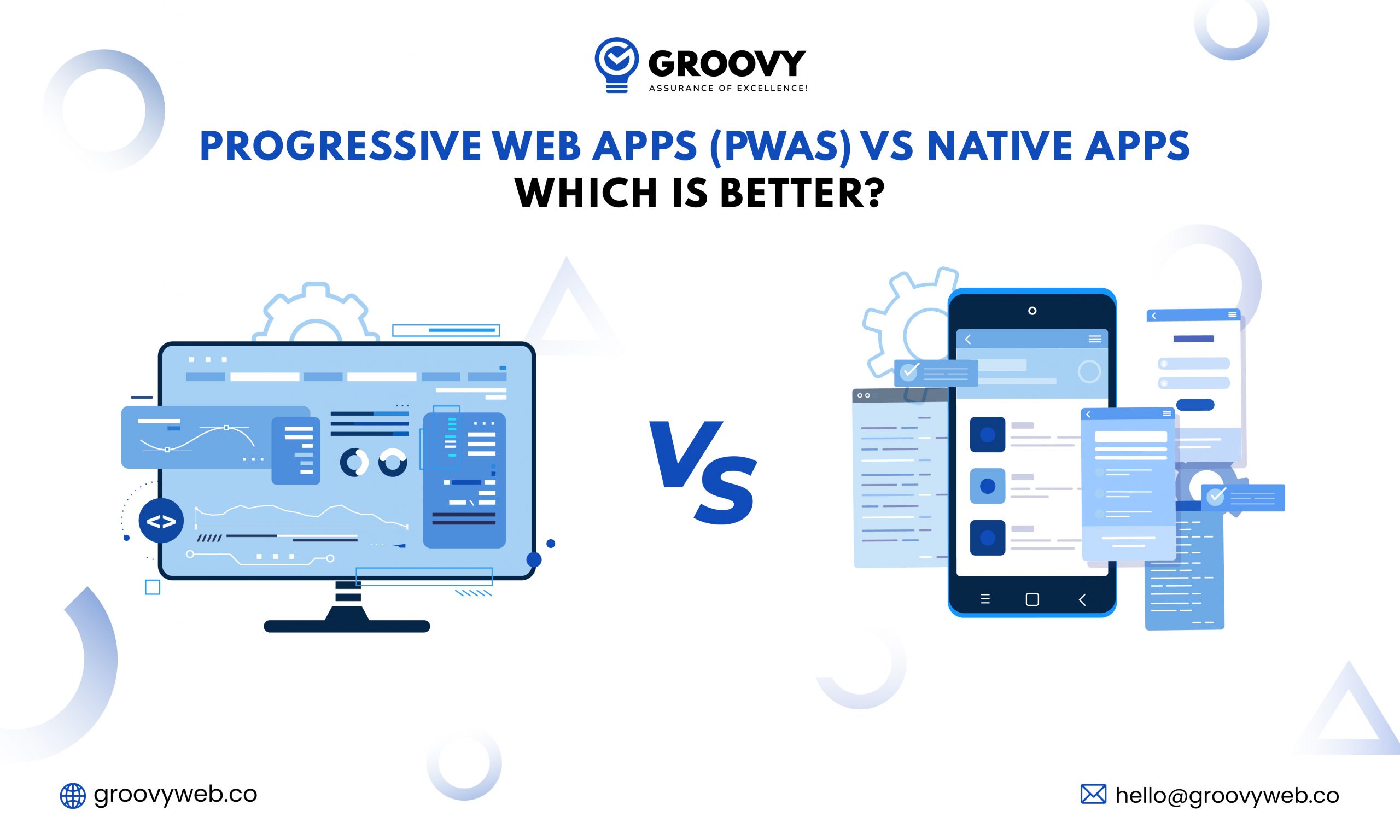
Ashok Sachdev
Progressive Web Apps (PWAs) vs Native Apps Which is Better?
Web App Development 30 Oct 2023 13 min read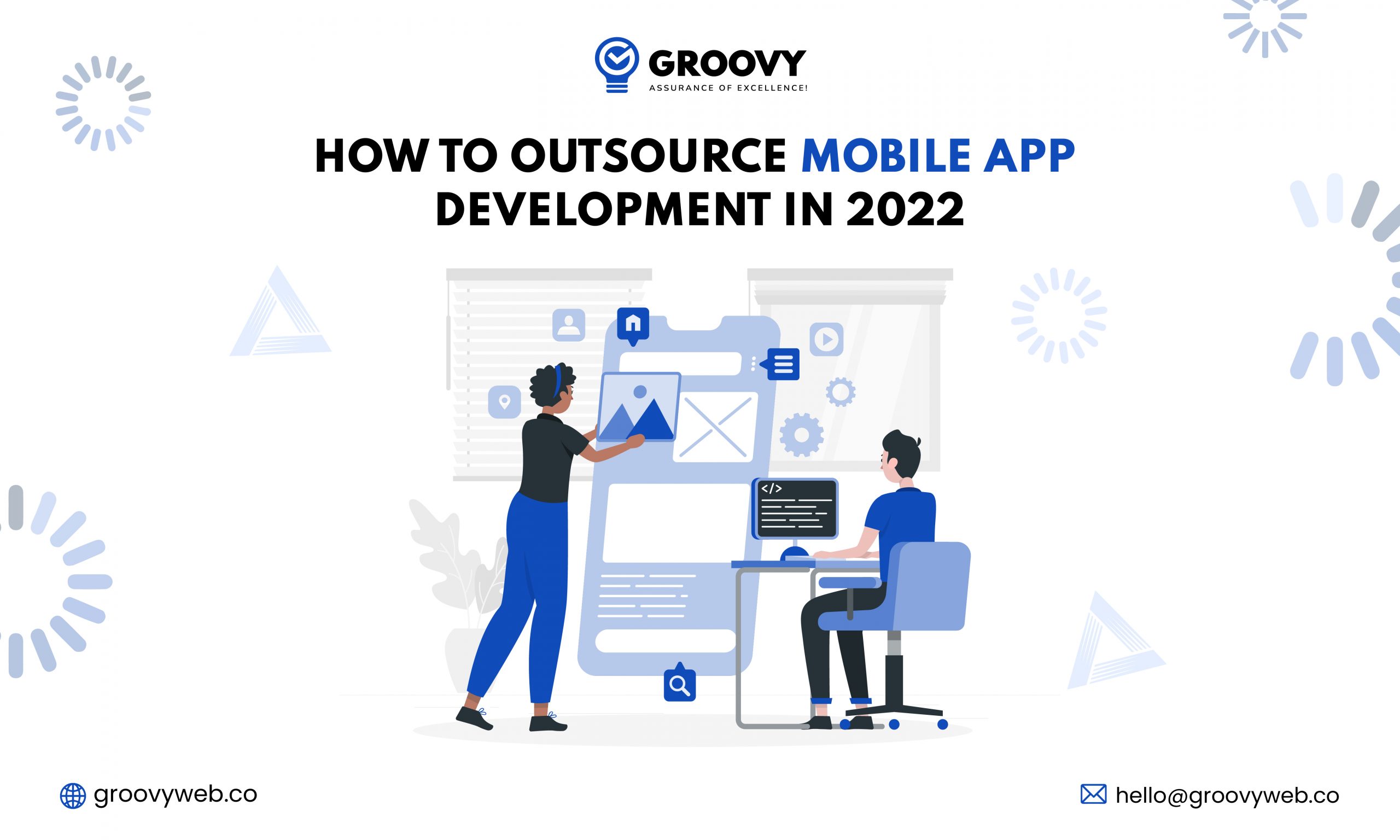
Rahul Motwani
How to Outsource Mobile App Development in 2023
Mobile App Development 26 May 2023 11 min read
Krunal Panchal
Groovy Web Named an Industry Leader on Top App Development Companies
Achivements 08 Apr 2022 2 min readSign up for the free Newsletter
For exclusive strategies not found on the blog